A moveable feast - pocketing Paris in my sketchbook
In July 2025 I spent a wonderful five days in Paris and sketched and sketched.
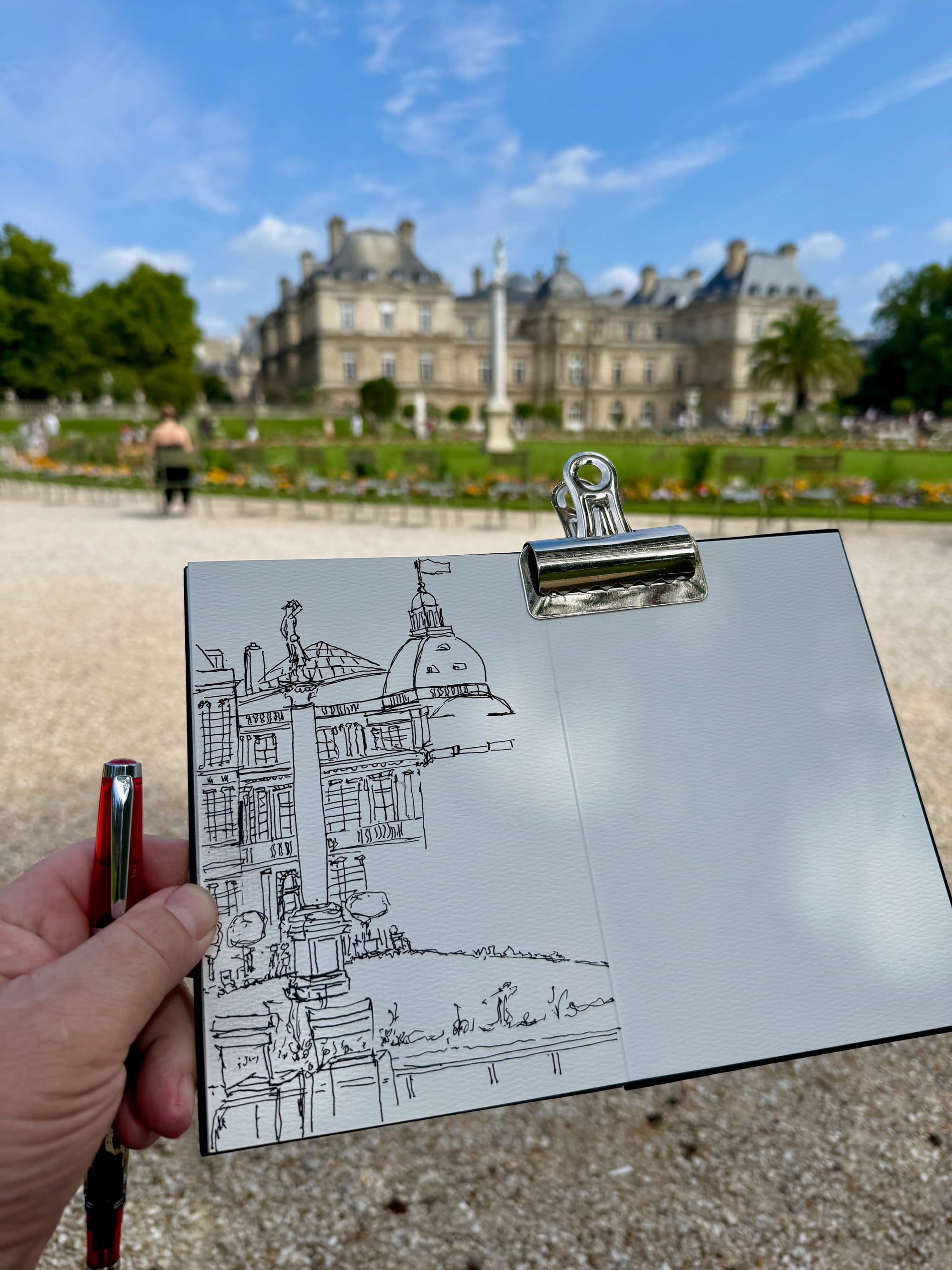
My Paris Travel Kit
ProArte brushes, Derwent waterbrush, Sailor Fude fountain pen, TWSBI Diamond 580 fountain pen, Kaweco brass mechanical pencil, POSCA white fine tip, Boots travel water bottle, Schmincke travel watercolor set (with additional pans), Pith Kabosu sketchbook, Potentate Concertina sketchbook, Fred Aldous bulldog clip.
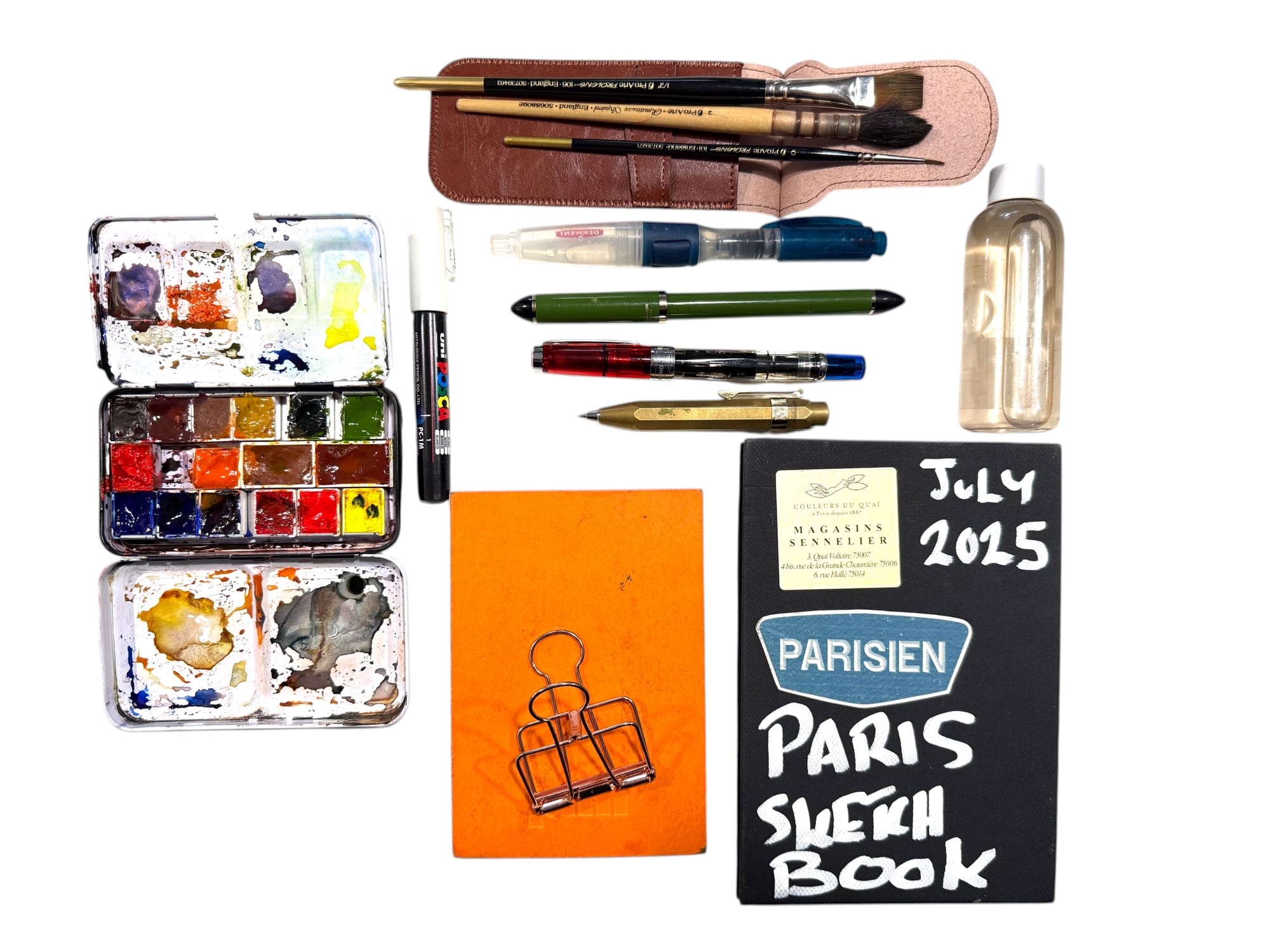
The Sketches
I'm so glad I took the Pith pocket book with me - because it allowed me to capture moments whilst on the go. I used the concertina book when I had a bit more time to sketch. They were often completed within 5 to 10 minutes - with me- precariously hiding behind my bag perched upon my knee to escape detection.
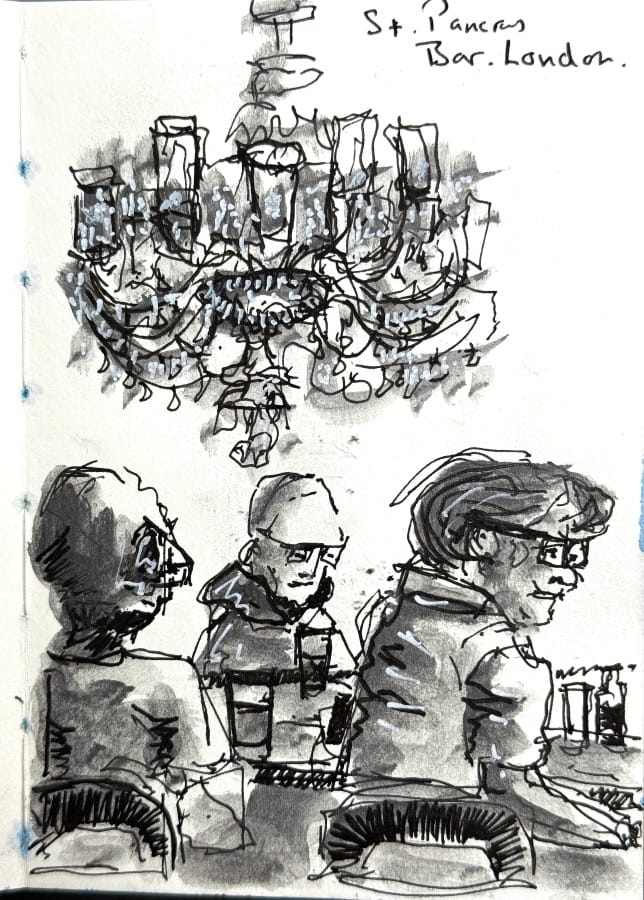
Minimal Sketching Set Up
How could I forget it! I left out my beloved tin of Art Graf soluble graphite. I use this in my minimal sketch set up. My pith pocket book, my TWSBI fountain pen and a water brush (which holds water inside).
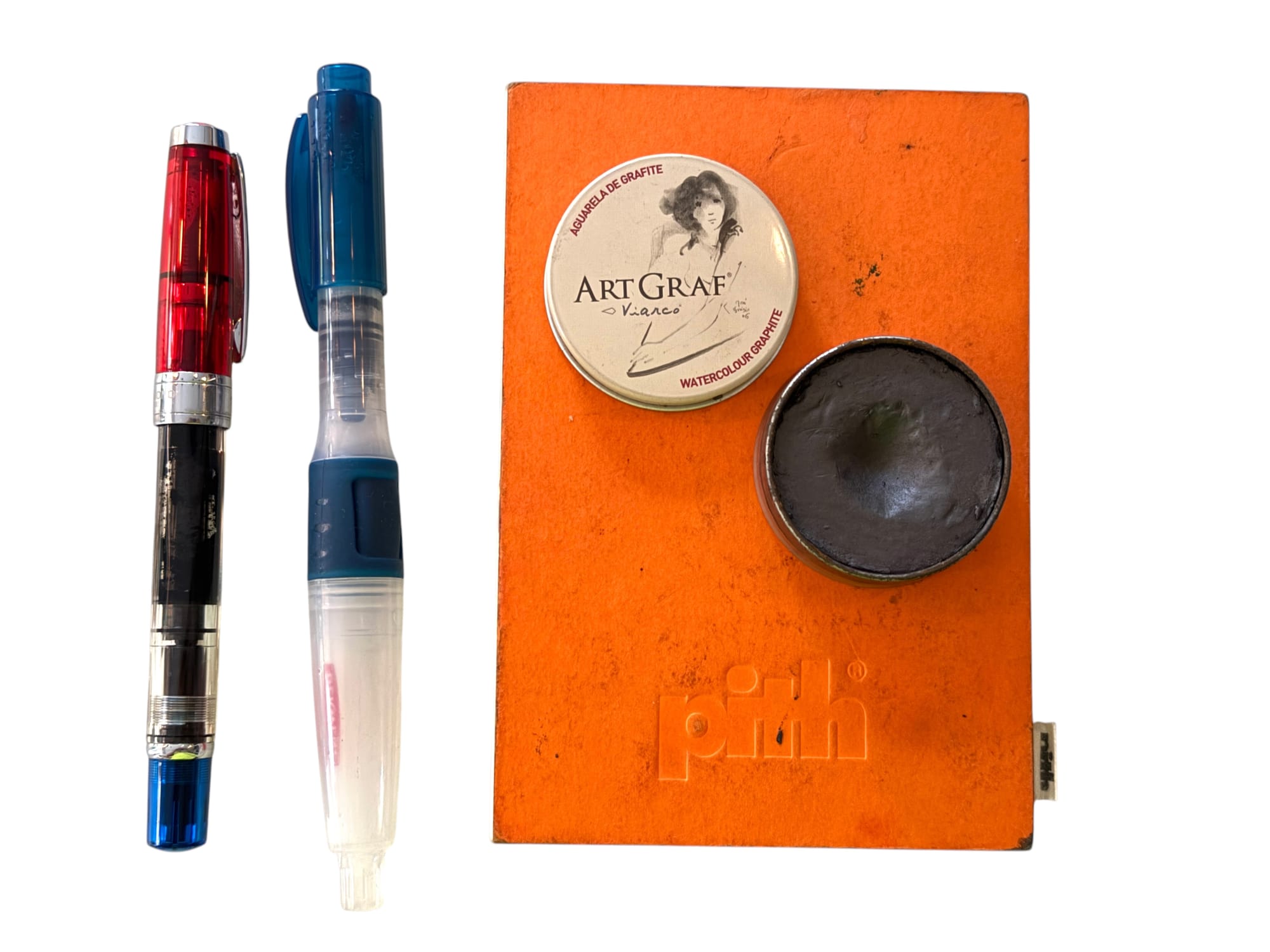
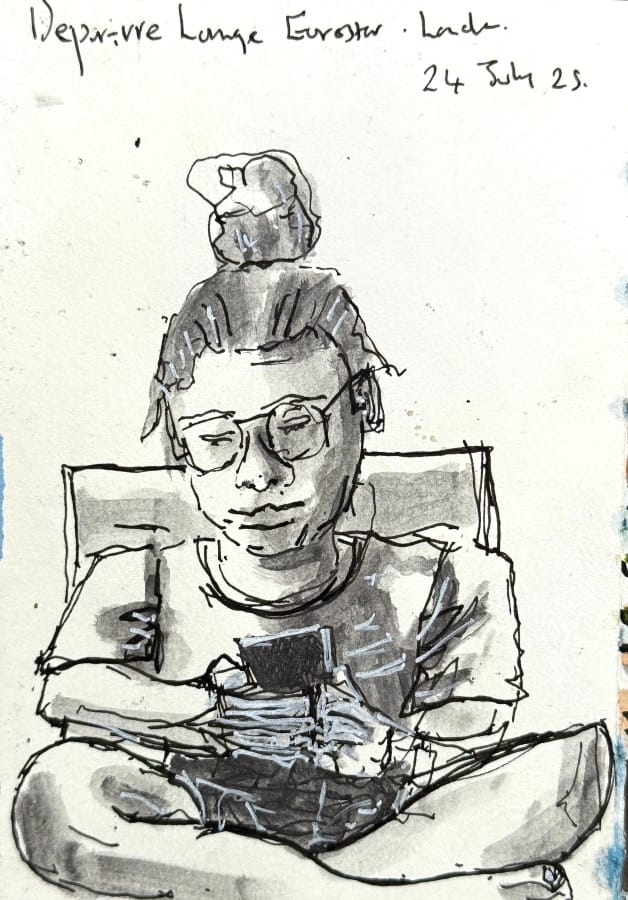
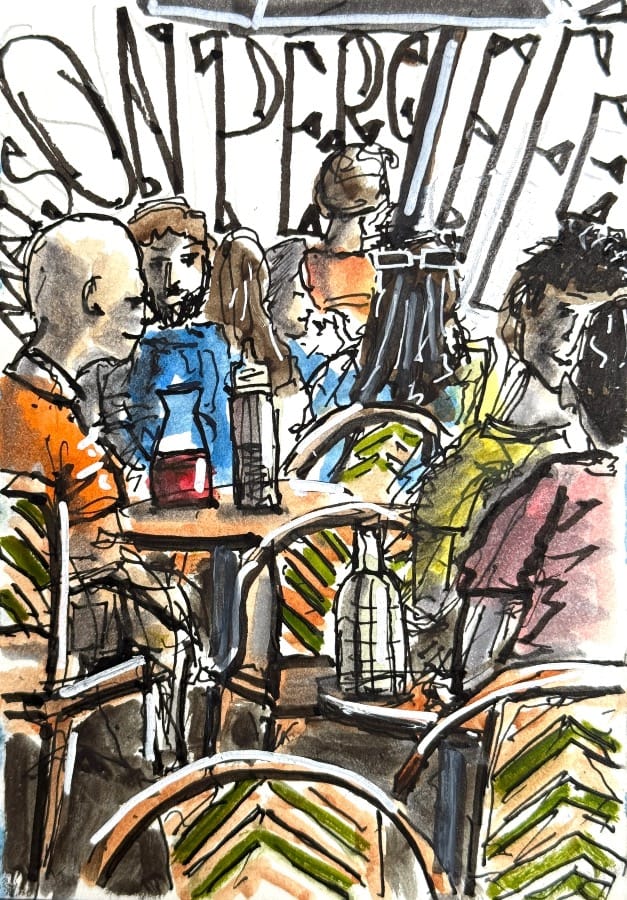
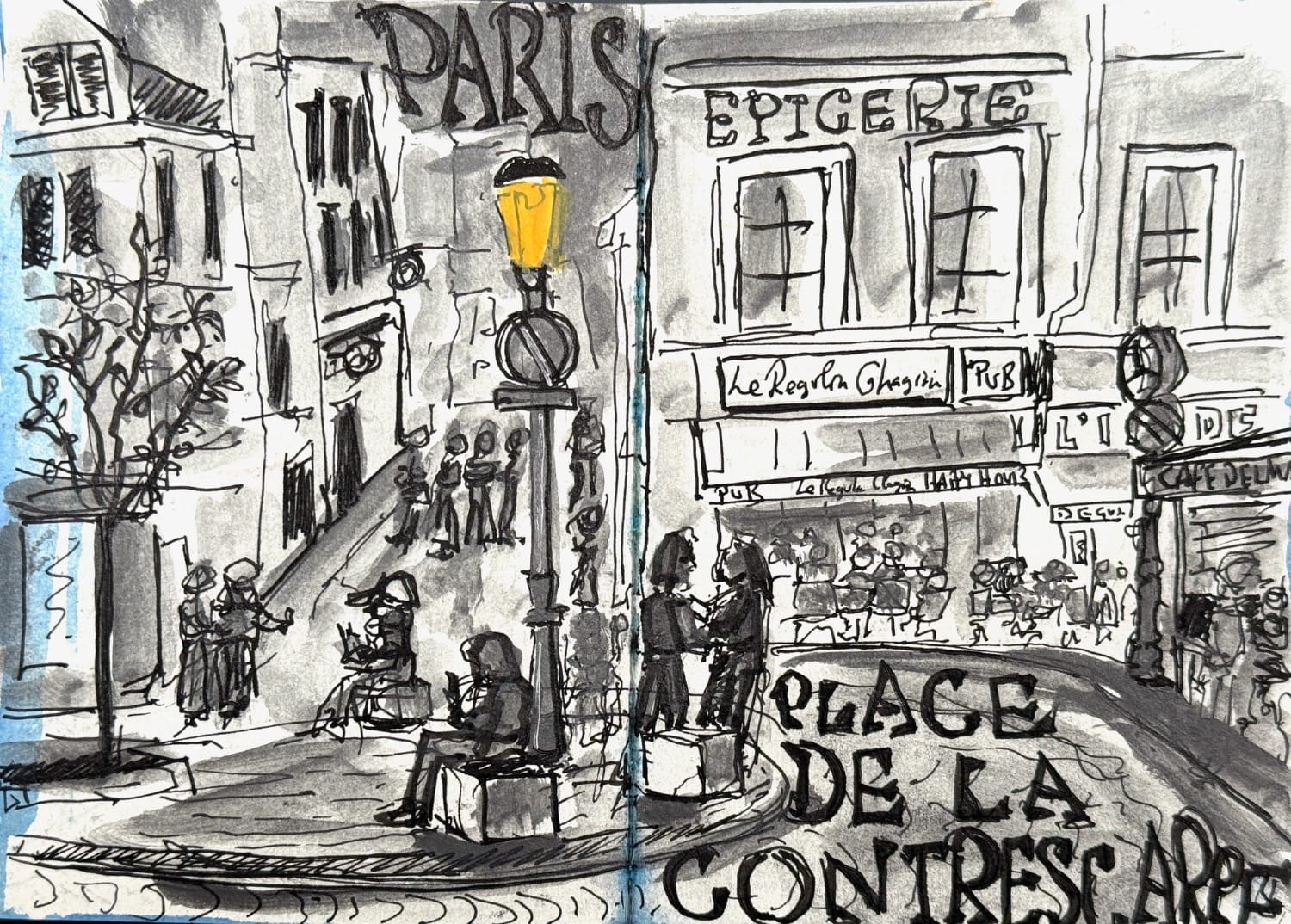
I arrived late into Paris because the Eurostar had been cancelled for my alloted time. As soon as I had settled into the Hotel des Grandes Ecoles, I set off for Place de la Contrescarpe (a hundred yards up the road) which was alive with people and music. I've been to Contrescarpe many times - I use it as a lodestar in Paris - a point from where I take breakfast and later supper. It's a wonderful base for exploration because it is off the beaten track.
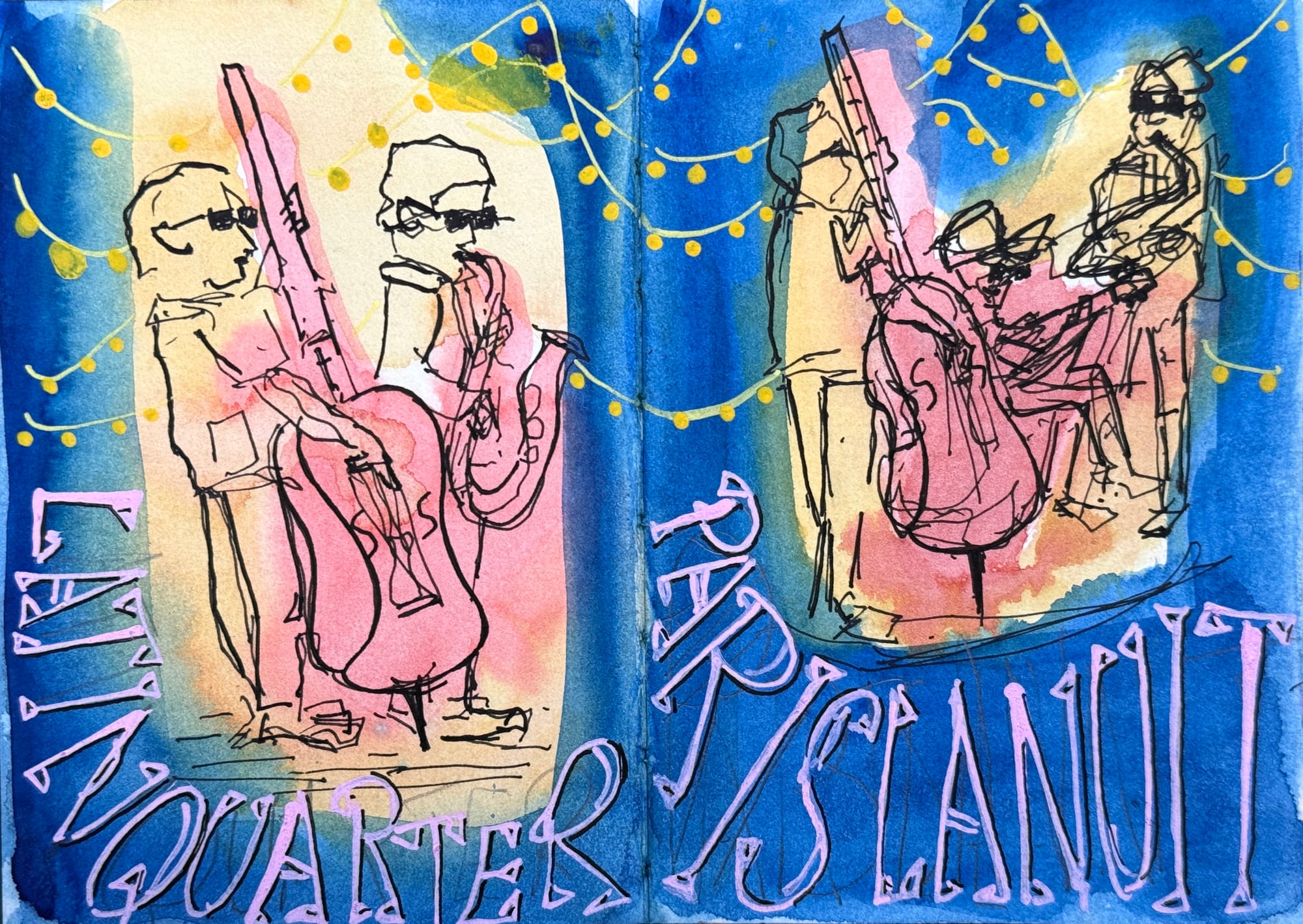


There's nothing that beats the first blush of Paris - the early days when you're taking it all in. The views and vistas, the people watching, the wine and food. Another sketch here from the Place de la Contrescarpe where all the chairs face outwards into the square.
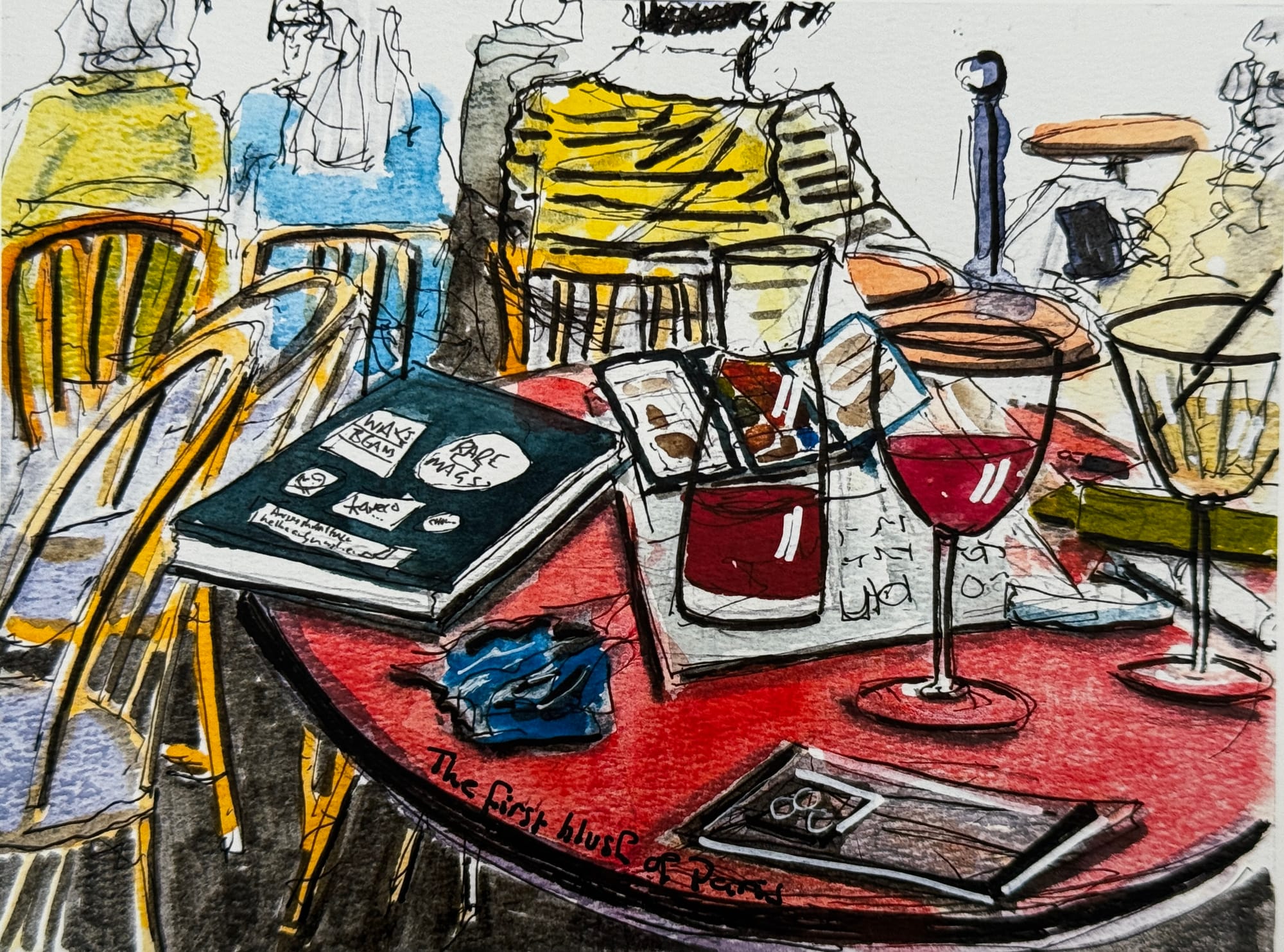
I've stayed at the Hotel Des Grandes Ecoles many times. I can't recommend it highly enough. It isn't cheap and I was lucky that this trip came as a birthday present. It was whilst I was sat here sketching that I met artist Marta Fonfara who pointed out one of her sketches in an art publication that I had on the table. Her Atelier is in the courtyard of the hotel.
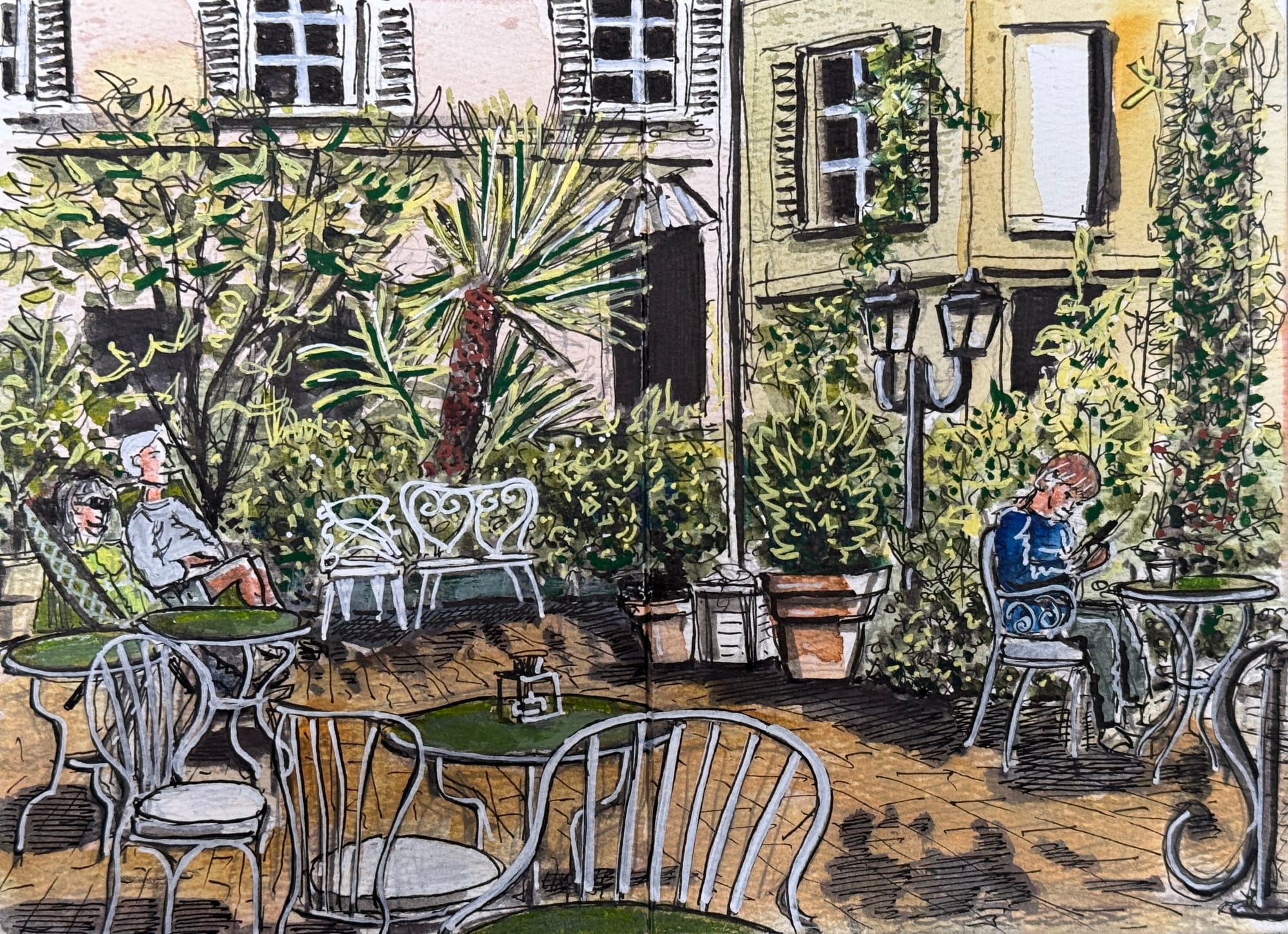
I think the best way to experience Paris is to focus on one thing a day, then let the rest of the day unravel around you (in cafés, bars, parks, etc.). Paris is about people-watching as much as it is about the culture. On the Saturday, I sat in the Jardin du Luxembourg in the shadow of a Grecian urn and sketched away. To my right, I could hear the laughter of children as they sailed their boats on the pond; to my left, the thud of a boxercise punch bag; and behind me, the scrape of gravel under the collective pieds of a tai chi group.
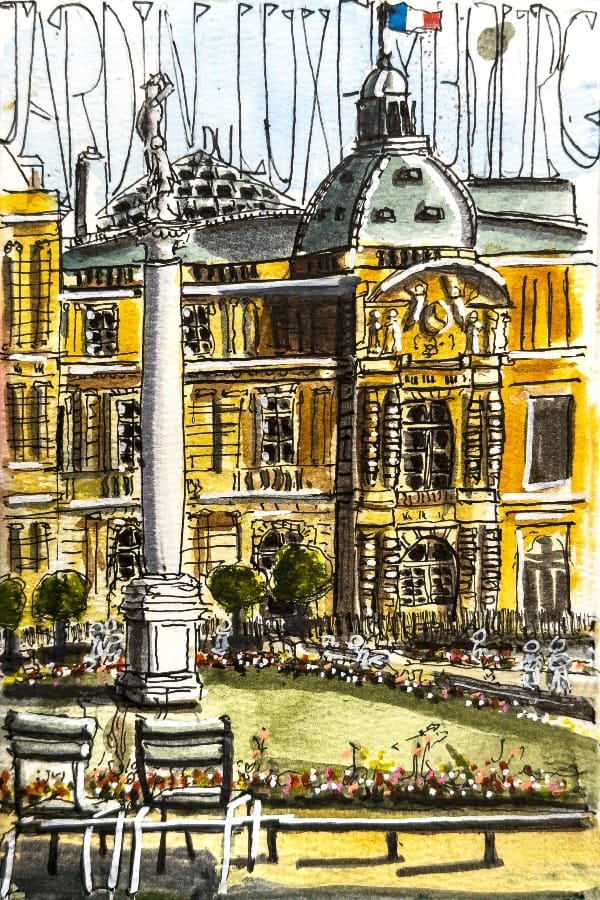
I was lucky enough to be taught French at primary school and, though I wouldn't say I'm fluent, I can get by with a basic conversation. It's a joy to converse with others and to be able to string a conversation together. More often than not those conversations would take place over breakfast in Contrescarpe.
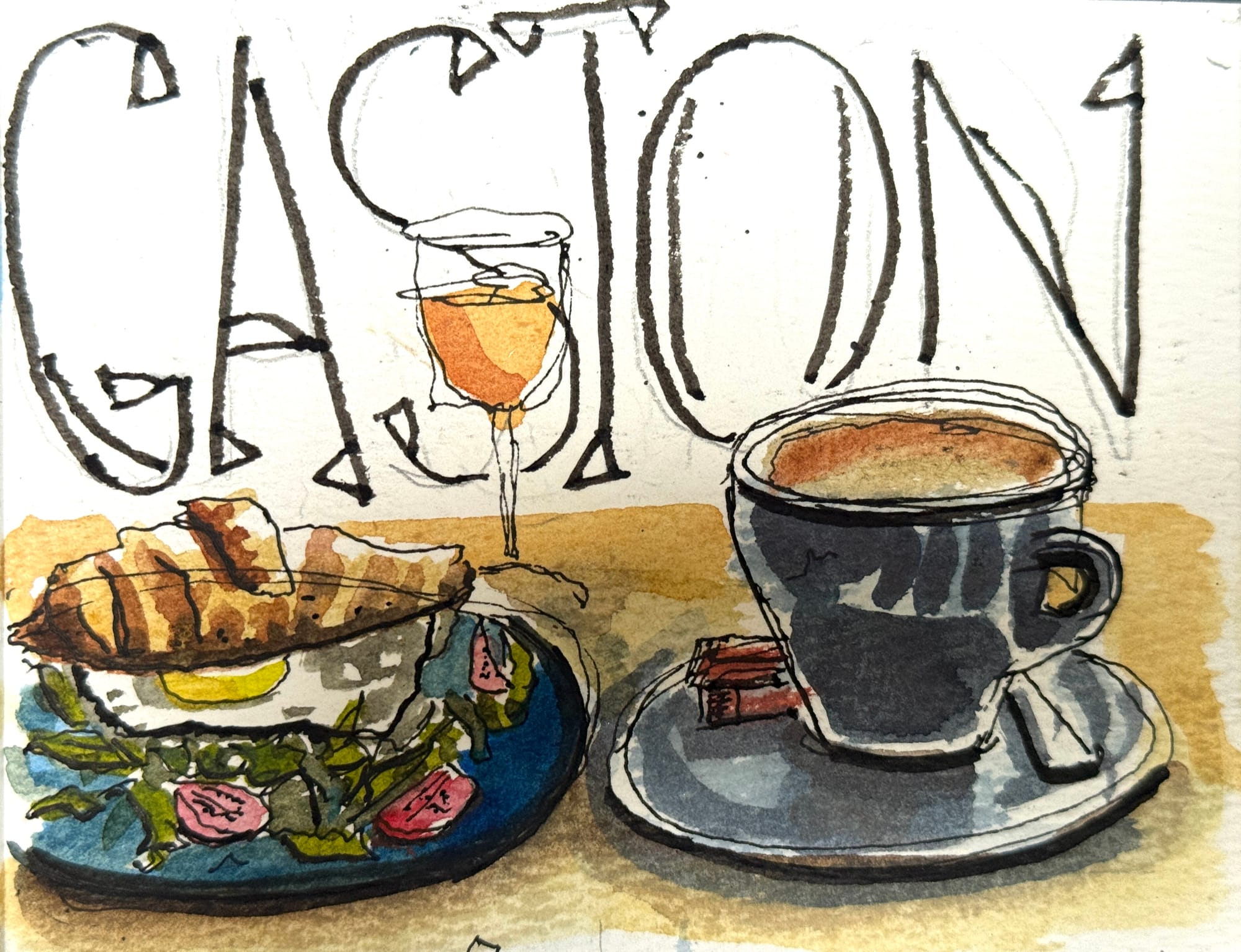
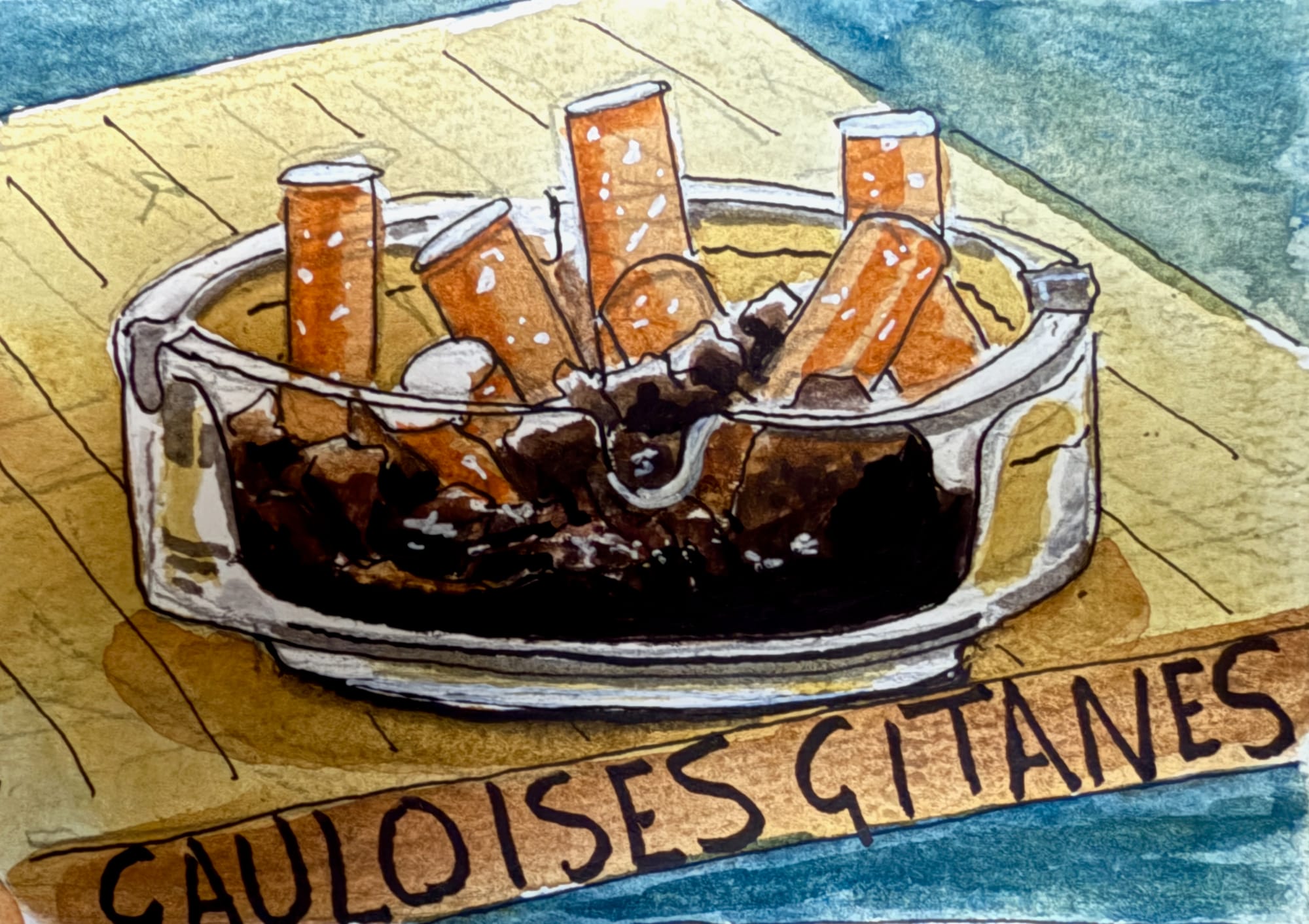
Many of the buildings around this area in the Latin Quarter survived Haussmann's renovation of Paris.
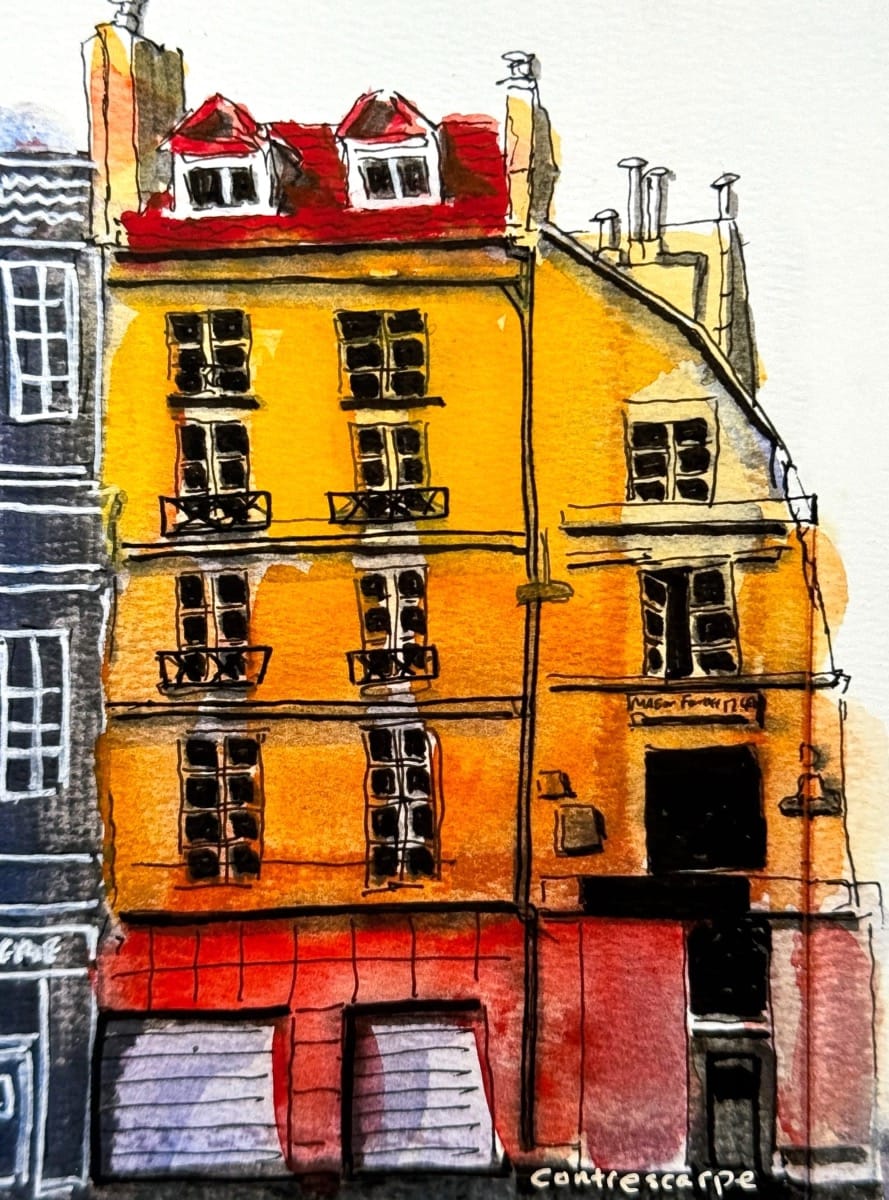
Just off Place de la Contrescarpe is Rue Mouffetard - one of the oldest streets in Paris. It is aligned along a Roman road. It is full of life. On the Sunday after church people come out and sing and dance on the streets.
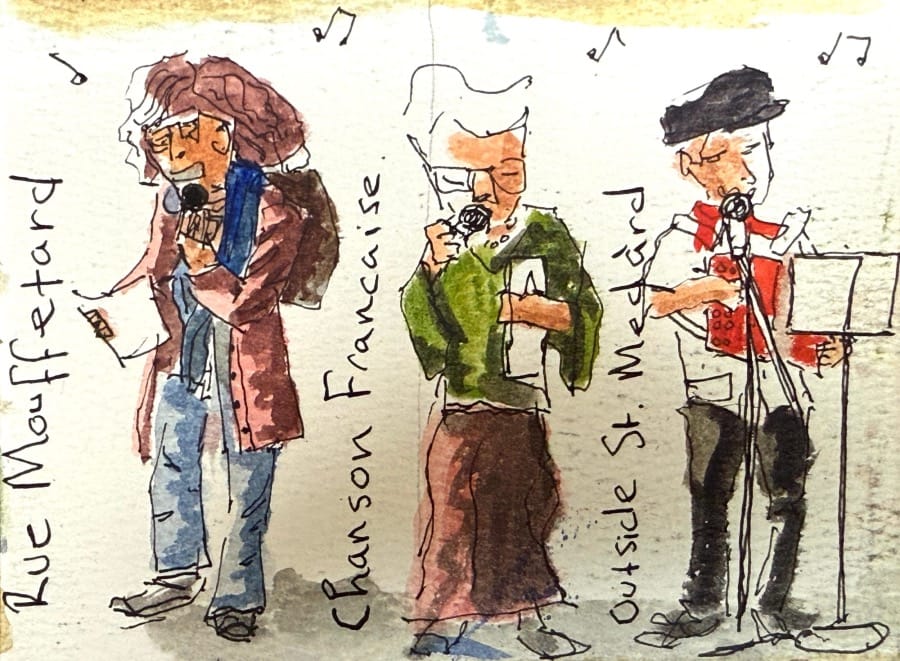
North of Rue Mouffetard and only a short walk from Contrescarpe is the Pantheon. I love the setting more than anything else - an example of how to use scale and proportion to great effect. I sat within the gargantuan columns and sketched others.
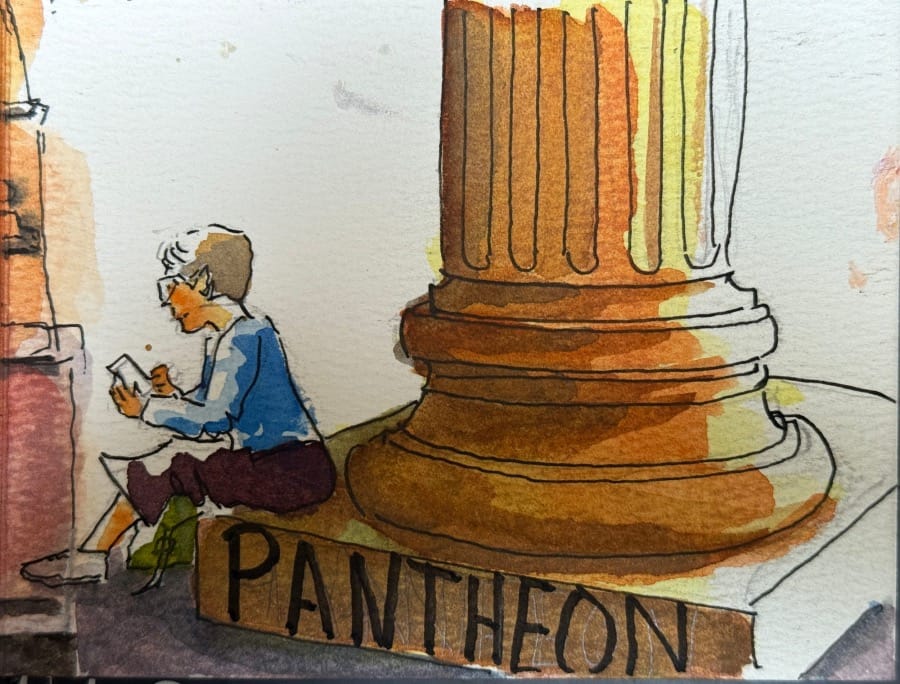
Sunday saw my trip to the Musée de Cluny - it's best visited on a Sunday morning. It opens quite early. Again, it's only a short walk from Contrescarpe and also next to Boulevard St. Michel which has lots of stationary shops. Beyond there the joy of Saint Germain and Les Deux Magots - once frequented by Hemingway, Camus, Sartre, Simone de Bouvoir and Picasso - and the little known artist, Andy Marshall. But, on this day Cluny was the star.
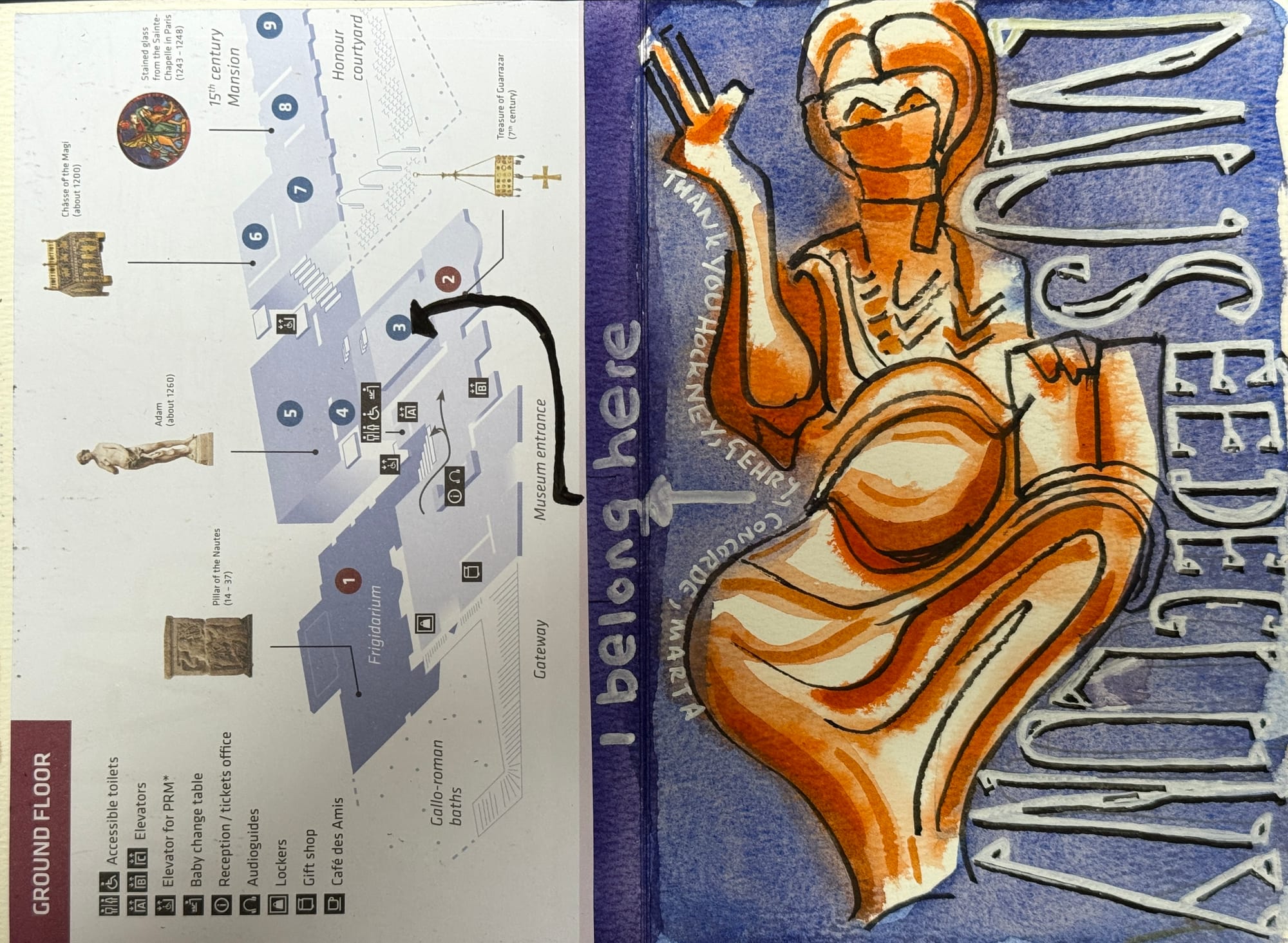
Inside - two artefacts of pure joy. The Romanesque Christ in Majesty with its secret S curve, and the Hispano-Moresque plate full of the zest of life.
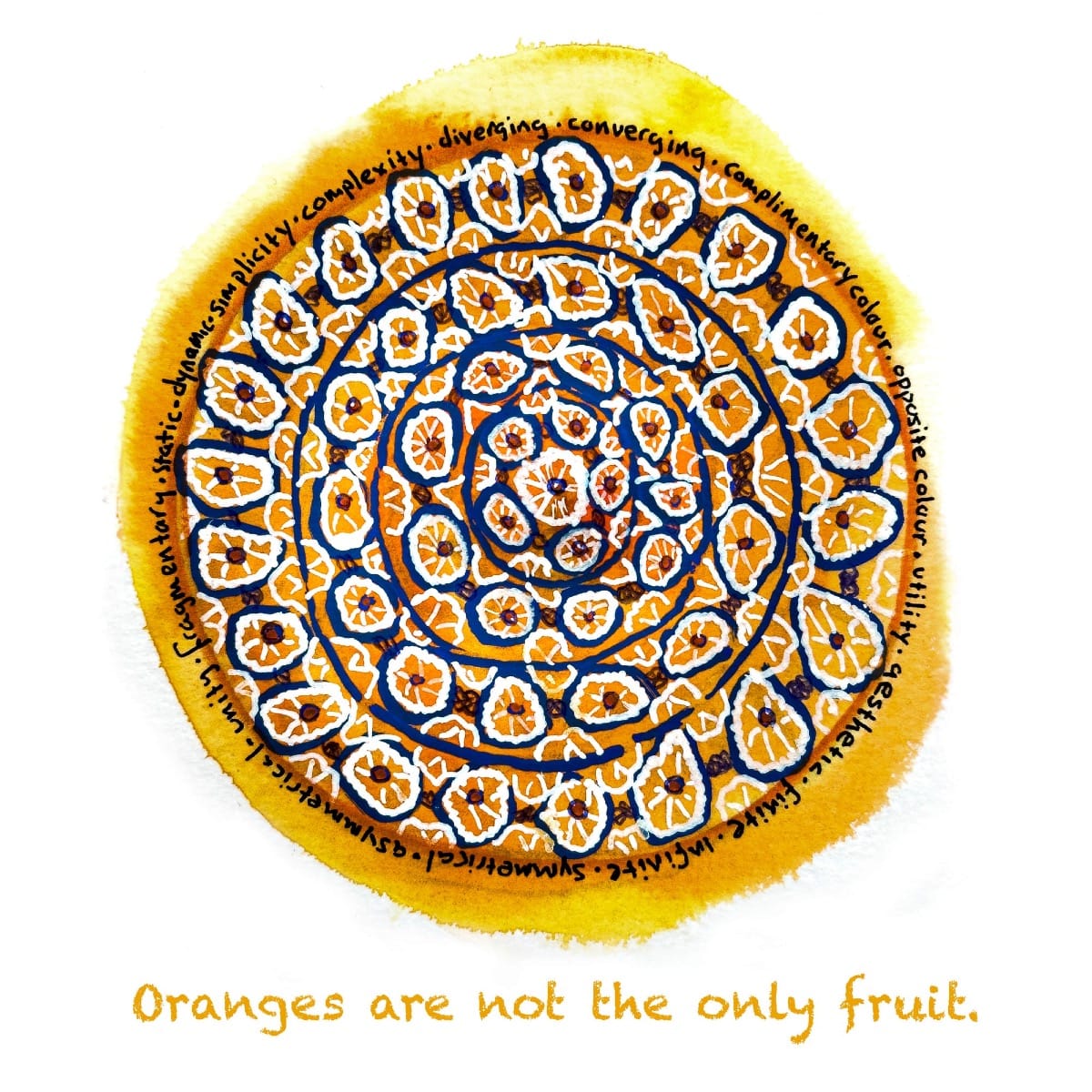
Later on the Sunday I took in the Tour de France along the Champs-Élysées but not before capturing some love locks along the Seine.
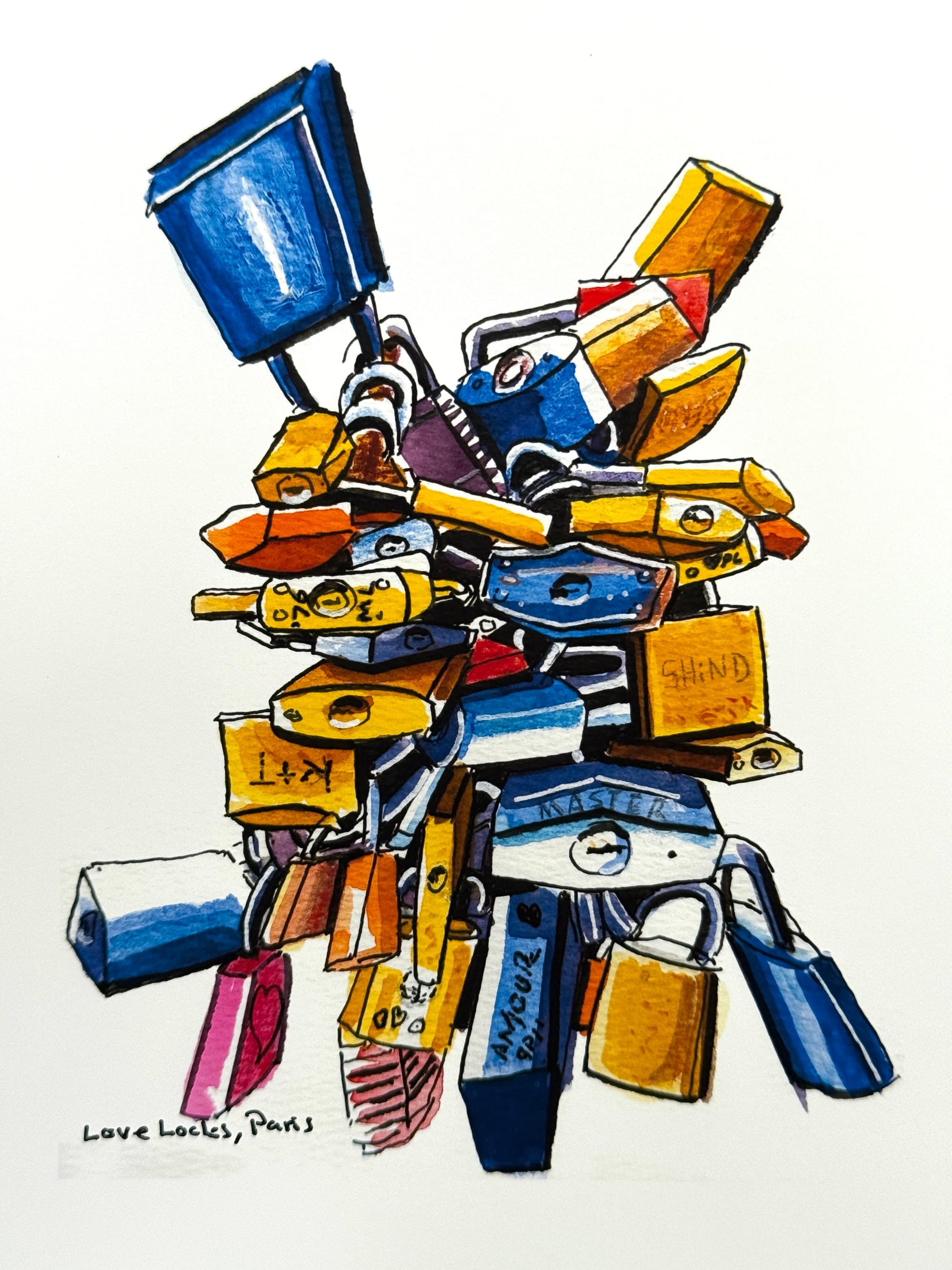
On my way back, whilst waiting for the Eurostar departure, I felt a touch overwhelmed by the crowds - so I sat outside the taxi rank and sketched whatever was in front of me.
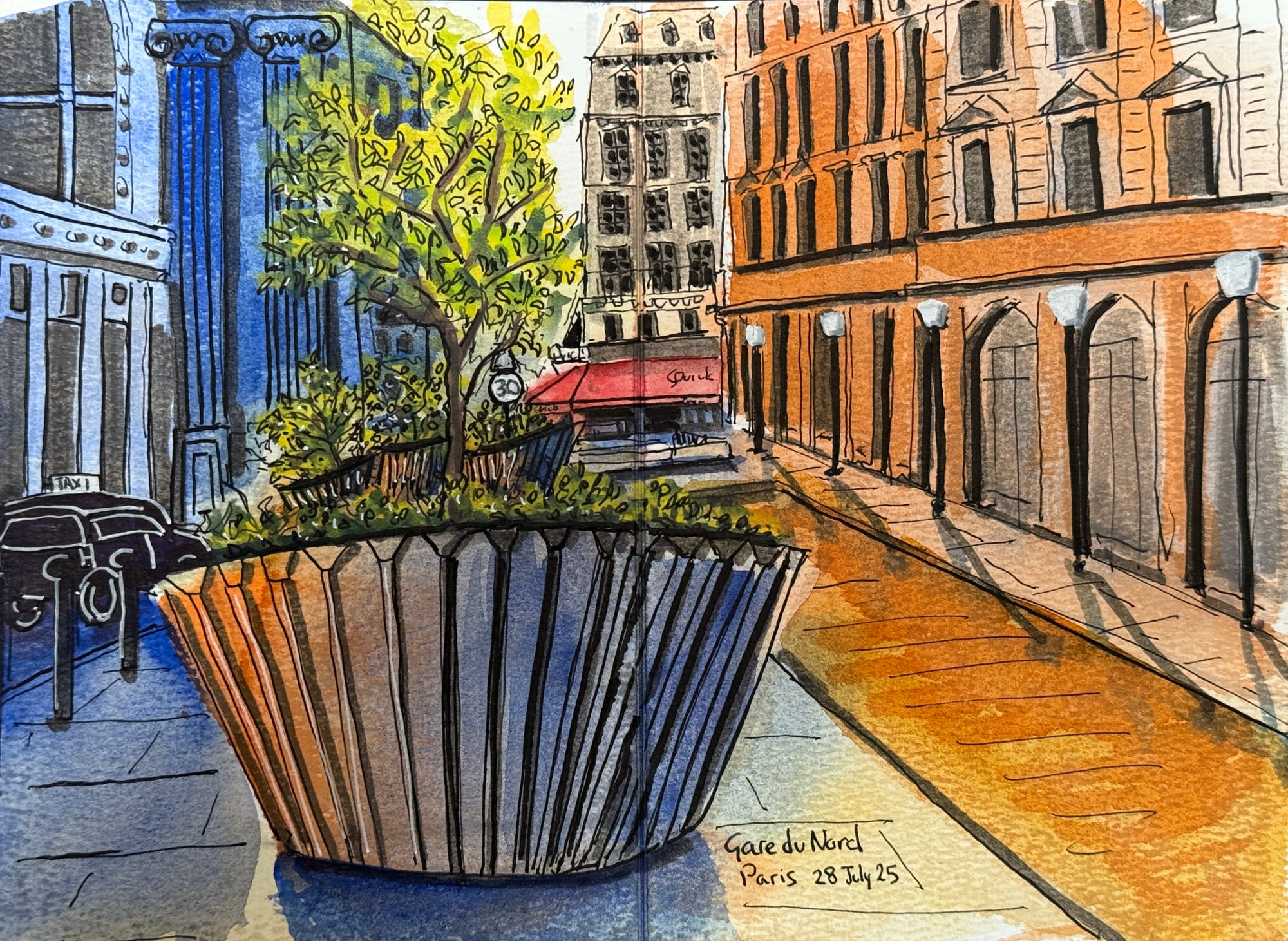
Un petit art haul
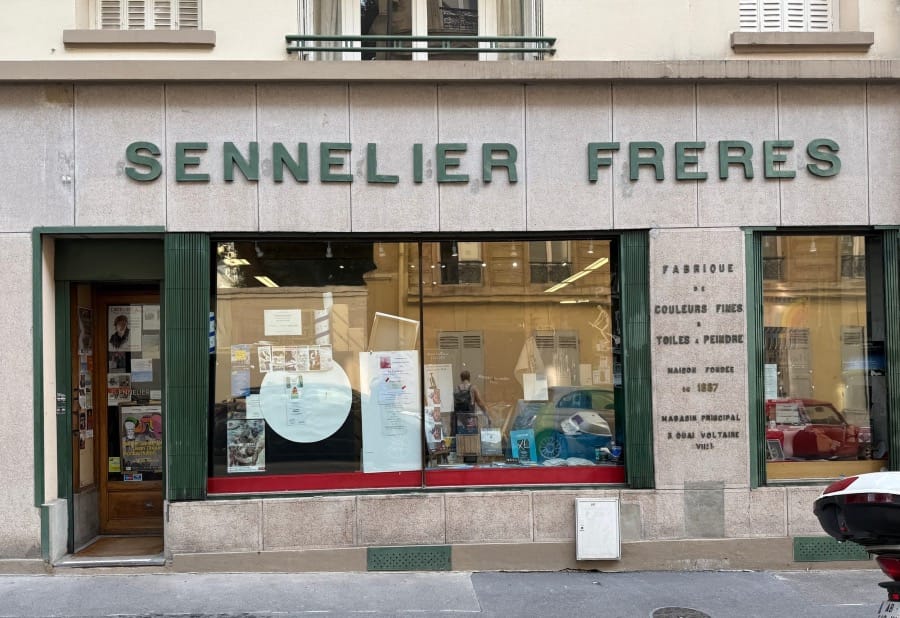
Just beyond the Jardin du Luxembourg is a lovely outpost of Magasin Sennelier.
Never too busy, great service and a short walk away from the Jardin.
I bought three sketchbooks.
Lamali Lokta Paper
This feels quite 'sacred'. The paper is handmade in Nepal from a renewable source. The cotton string is braided in macramé - a skill Nepalese use when making traditional carpets. The paper is infused with tea - and it smells divine - although one friend mockingly asked me if I was going to roll it up and smoke it...
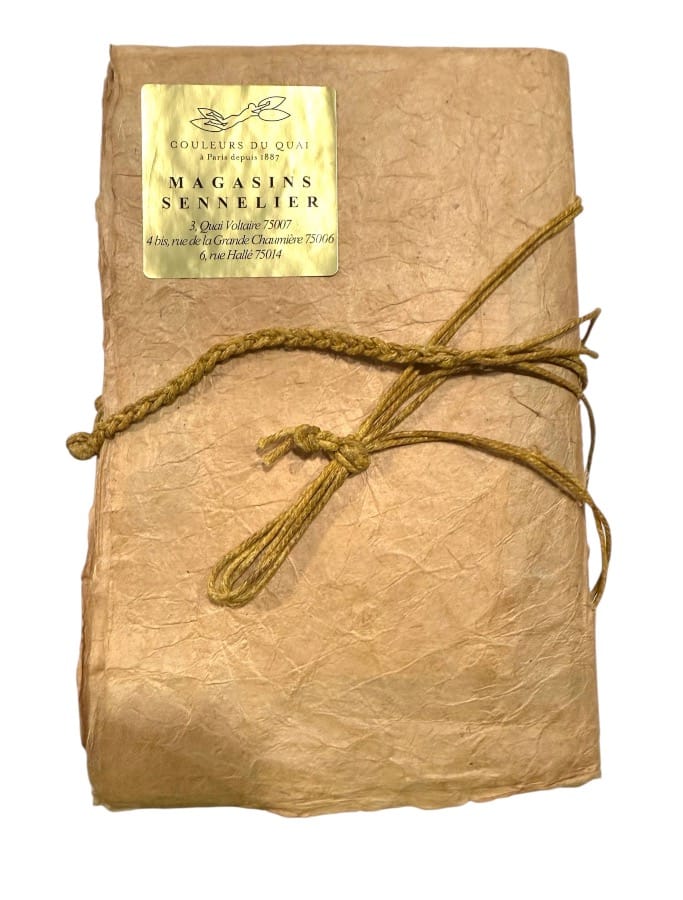
What do you think? How should I use this sketchbook with its brown tint? What should I record in it?
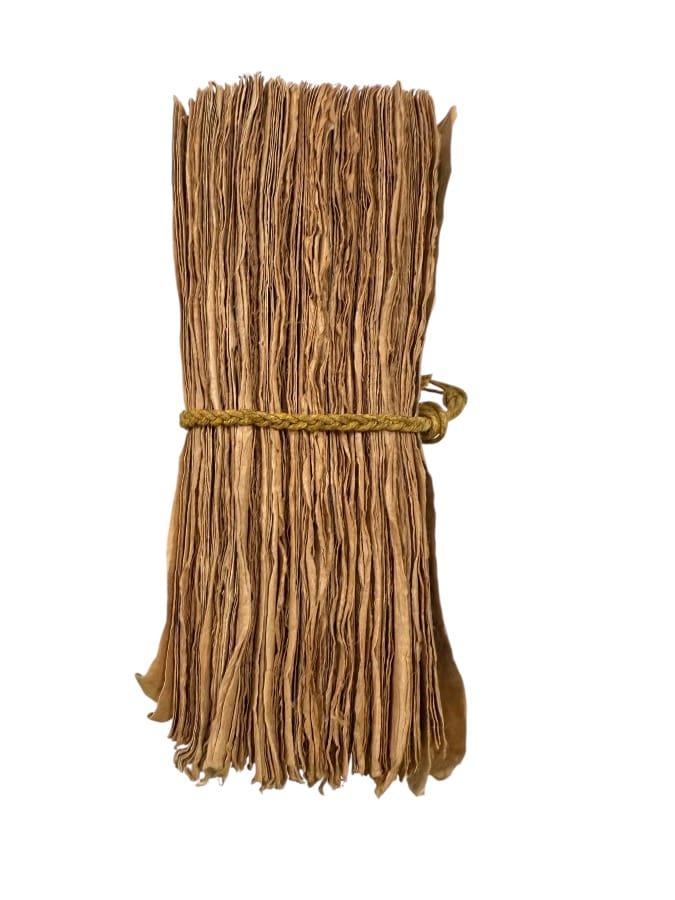
Sennelier spiral bound landscape pocket book.
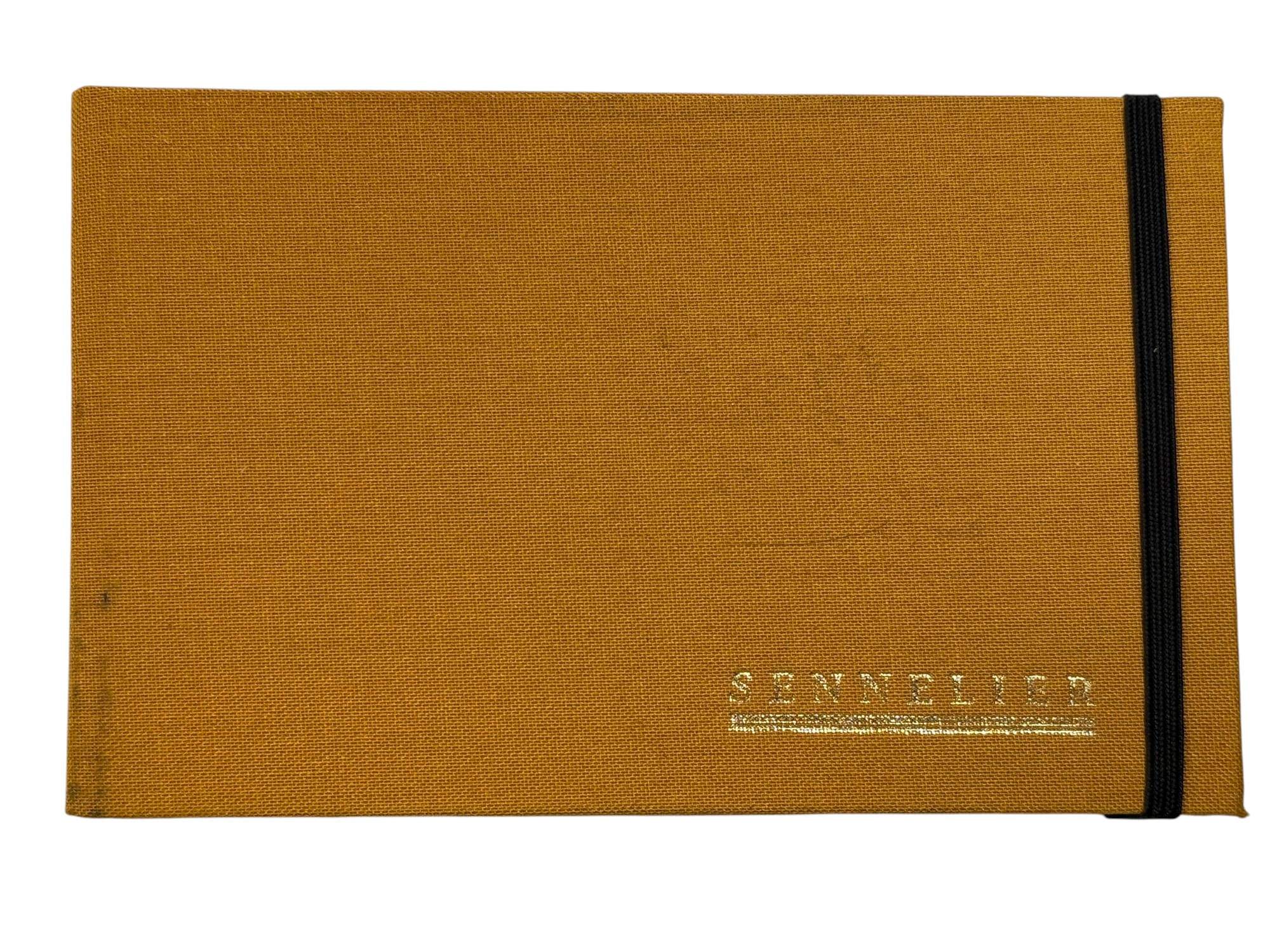
I bought this to use as a record for my swatches - where I record where the colour combinations turned out best and in what sketches. The swatch on the right below was used in my Paris Jazz players sketch.
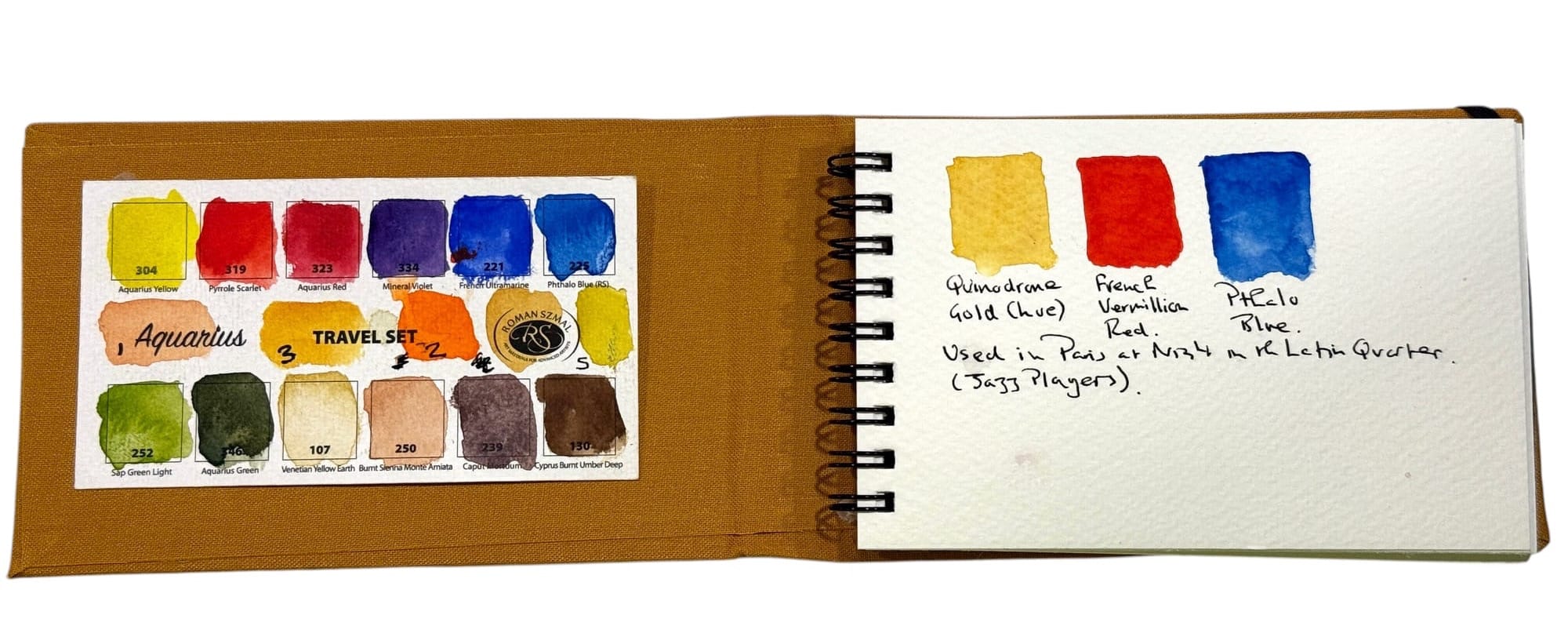
I'm going to have so much fun with this little concertina book!
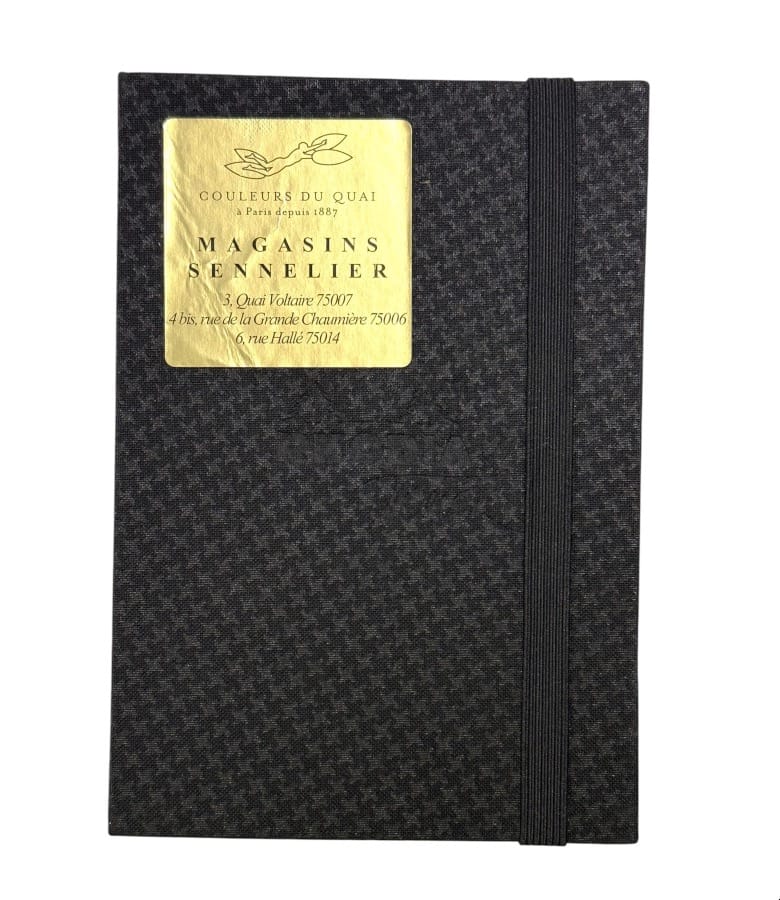
It has two separate concertinas.
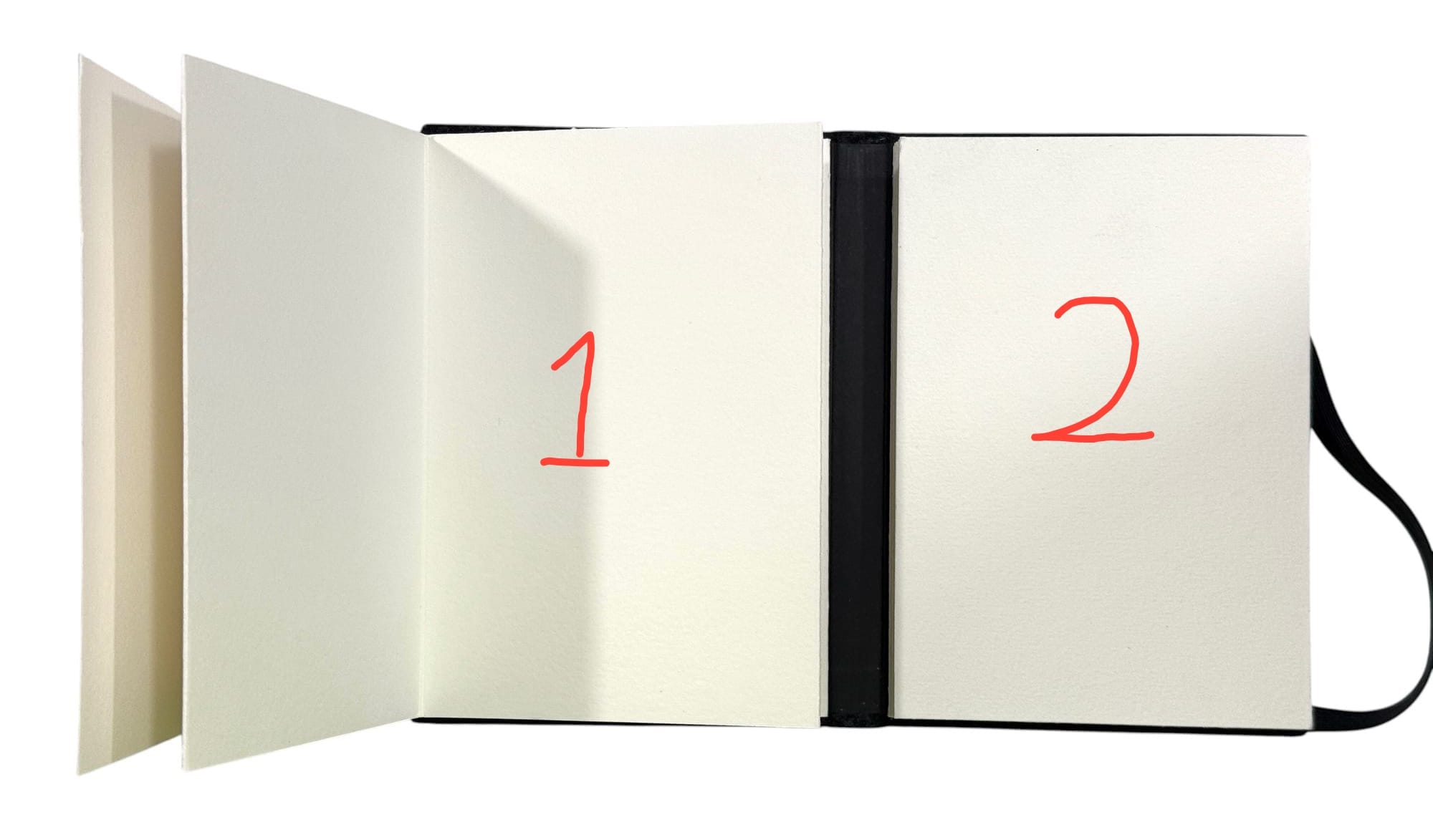
Sennelier Location:
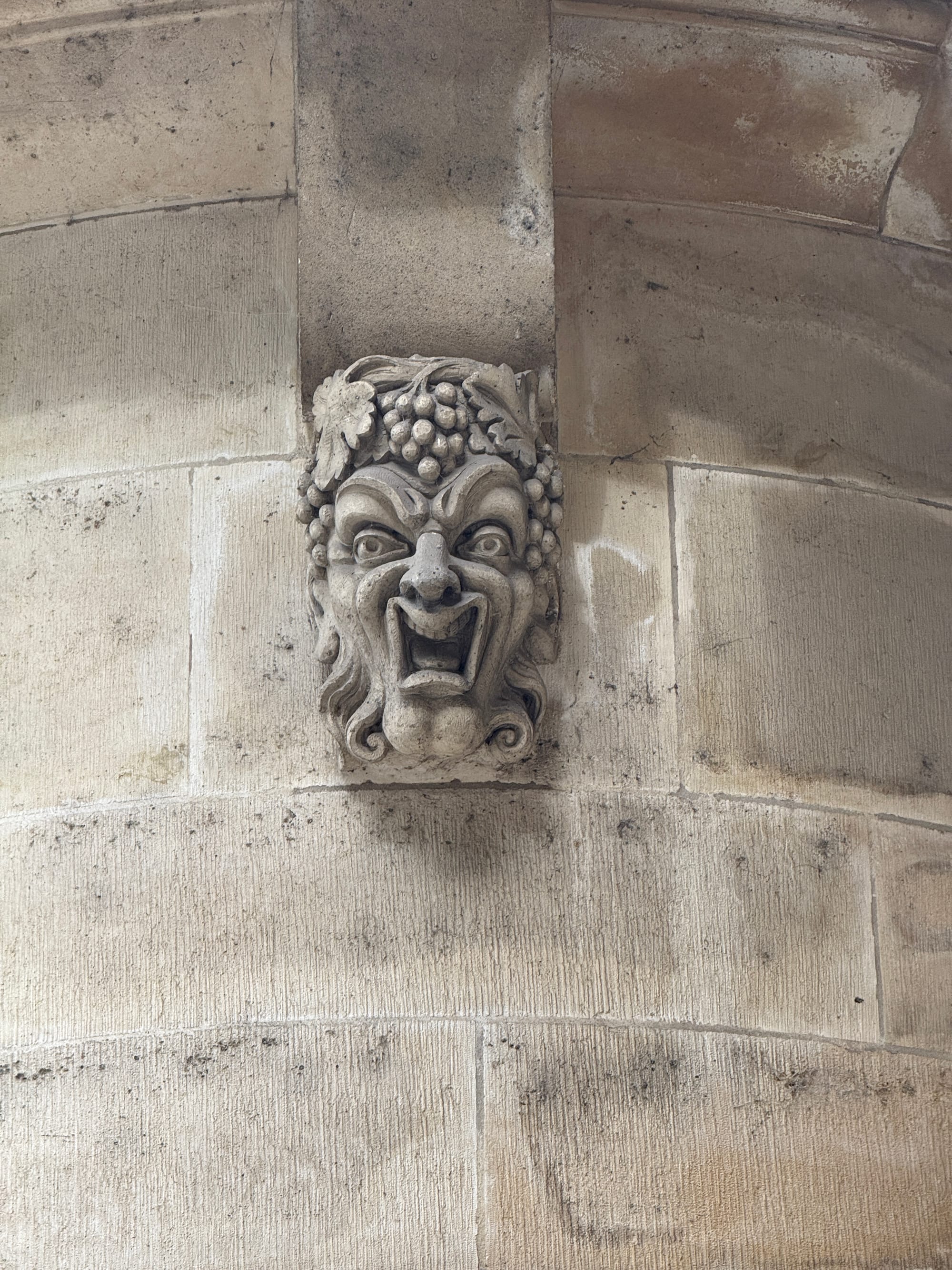
Can you help support me by becoming a Member?
Ways of Seeing. Exclusive content. Deeper Insights. Discover more.
Join TodayElif Shafak
We carve our dreams into objects, large or small. The emotions we hold but fail to honour, we try to express through the things we create, trusting that they will outlive us when we are gone, trusting that they will carry something of us through the layers of time, like water seeping through the rocks. It is our way of saying to the next generations, those we will never get to meet, 'Remember us.' It is our way of admitting we were weak and flawed, and that we made mistakes, some inevitable, others foolish, but deep within we appreciated beauty and poetry, too. Each historical artefact, therefore, is a silent plea from ancestors to descendants, 'Do not judge us too harshly.' We make art to leave a mark for the future, a slight kink in the river of stories, which flows too fast and too wildly for any of us to comprehend. (Elif Shafak - There Are Rivers In The Sky)
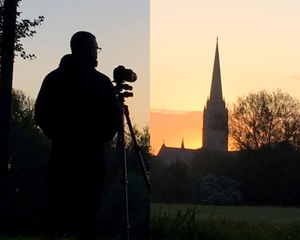
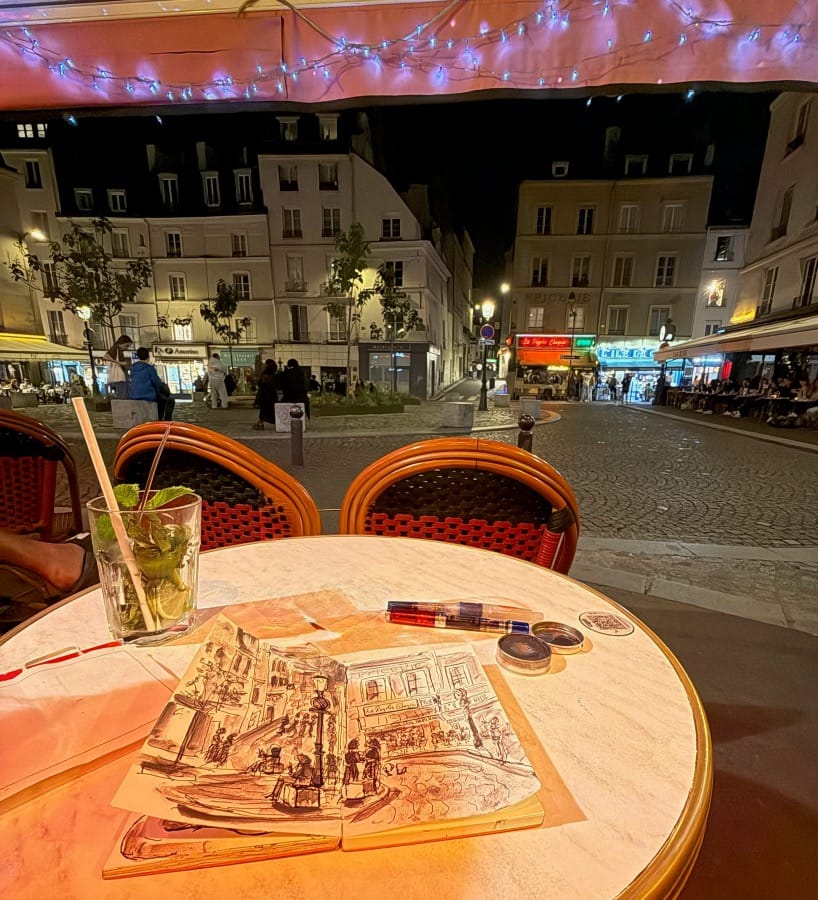
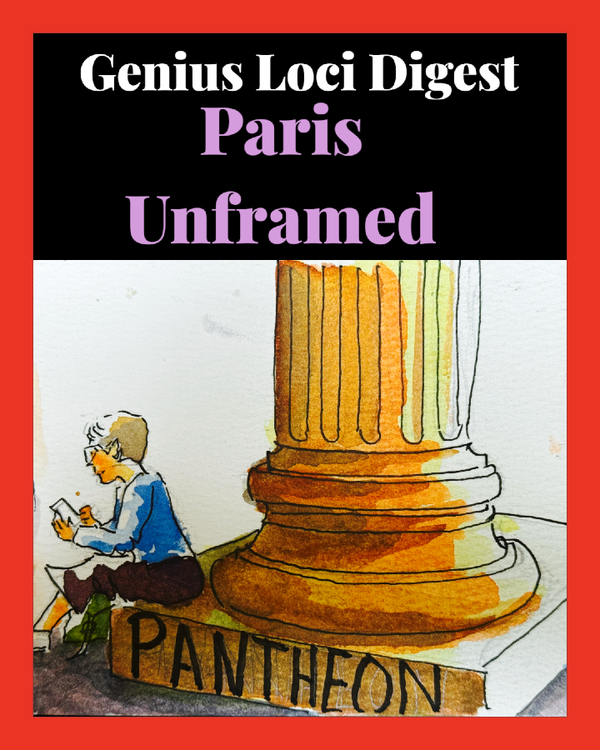
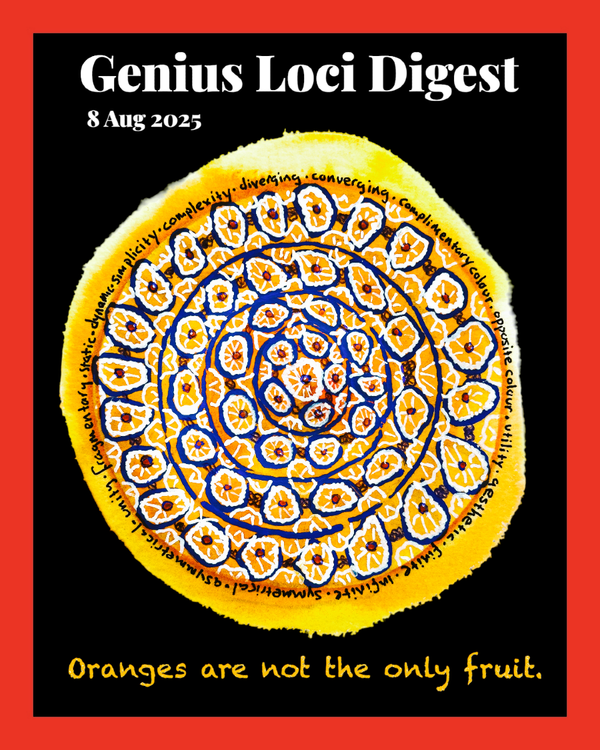
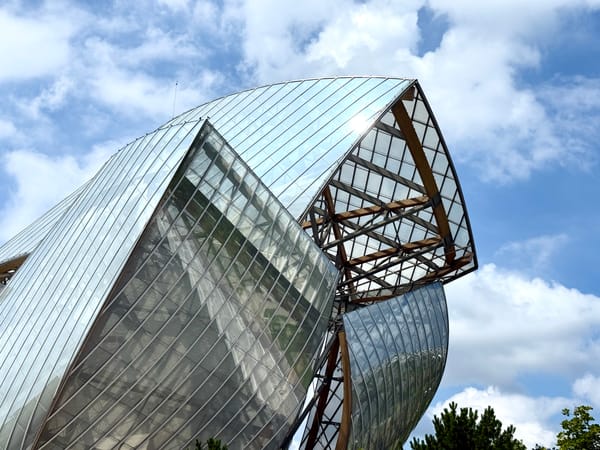
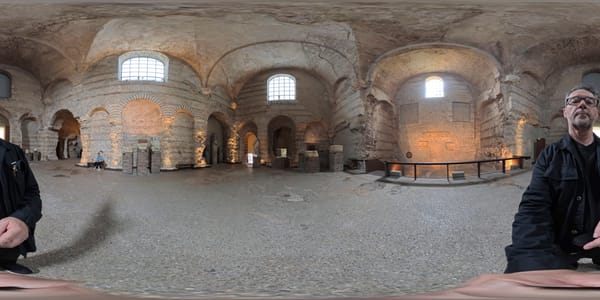
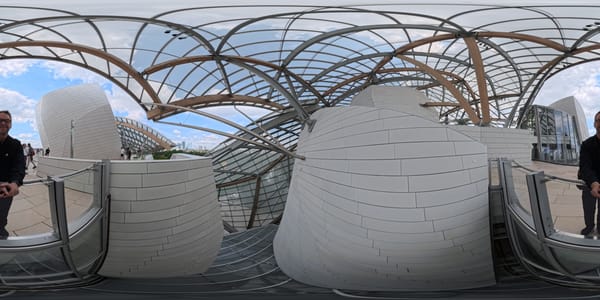
Member discussion